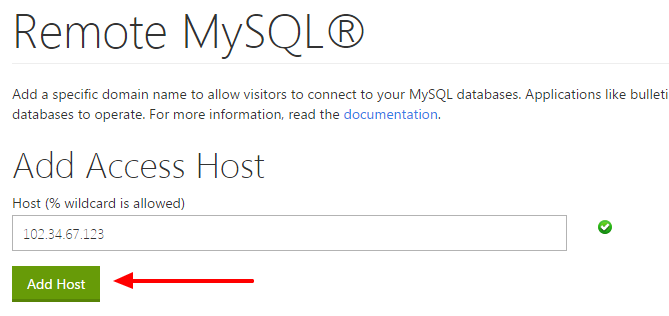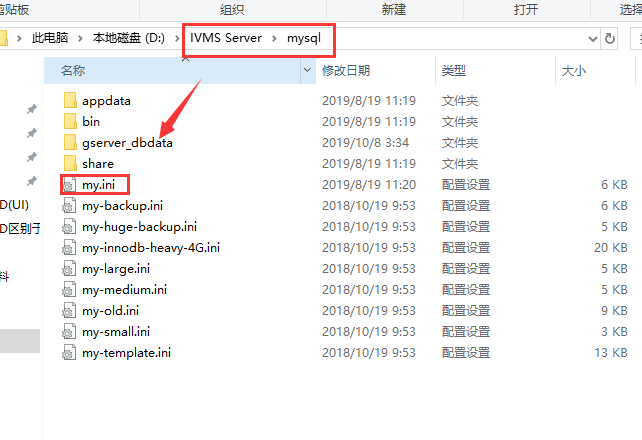

- #ENABLE REMOTE ACCESS TO MYSQL DATABASE SERVER PHPMYADMIN PASSWORD#
- #ENABLE REMOTE ACCESS TO MYSQL DATABASE SERVER PHPMYADMIN FREE#
However, setting bind-address to 0.0.0.0 is unsafe since it permits connections to your server from any IP address.Advanced members with knowledge on database, programming and security might want to enable remote MySQL access to their site because of faster development, quicker access or any other reason that would be related to the need of having remote access to the database. If you can access your database, it demonstrates that the bind-address directive in your configuration file was the source of the problem.

Iptables $ sudo iptables -A INPUT -p tcp -s r_server_ip -dport 3306 -j ACCEPTįirewalld $ sudo firewall-cmd -permanent -zone=public -add-port=3306/tcpĪfter that, try remotely accessing your database from another machine: Note: If you configured your firewall to only accept connections from a single IP address, you must attempt to access the database using the machine associated with that address. UFW $ sudo ufw allow from r_server_ip to any port 3306 Or to enable anyone to access your MySQL database in use: Replace r_server_ip with the real IP address of the computer to which you want to connect: If you only want to connect to the database server from one machine, use the following command to grant that machine exclusive authorization to connect to the database remotely. The MySQL client can then be closed: mysql> exit įinally, if you have a firewall installed on your database server, you must open port 3306 - MySQL’s default port - to enable communication to MySQL. This will release any memory cached by the server as a result of the previous CREATE USER and GRANT statements: mysql> FLUSH PRIVILEGES mysql> GRANT CREATE, ALTER, DROP, INSERT, UPDATE, DELETE, SELECT, REFERENCES, RELOAD on *.* TO WITH GRANT OPTION Īfter that, it’s a good idea to execute the FLUSH PRIVILEGES command.
#ENABLE REMOTE ACCESS TO MYSQL DATABASE SERVER PHPMYADMIN FREE#
You should, however, only provide people the access they require, so feel free to change your own user’s privileges as required. It also allows the user to query data using SELECT, construct foreign keys using the REFERENCES keyword, and conduct FLUSH operations using the RELOAD permission. The following example allows a user to CREATE, ALTER, and DROP databases, tables, and users, as well as INSERT, UPDATE, and DELETE data from any table on the server. Run the following command: mysql> RENAME USER TO for your specific needs, assign the new user the relevant rights. Or To change an existing user’s host, you can use MySQL’s RENAME USER command. With the following command, we can create a new user account that will only connect from the remote host: mysql> CREATE USER IDENTIFIED BY 'password'
#ENABLE REMOTE ACCESS TO MYSQL DATABASE SERVER PHPMYADMIN PASSWORD#
If User root has a password use: $ mysql -u root -p Open the MySQL client as the root MySQL user or another privileged user account: $ sudo mysql If you already have a MySQL user account that you intend to use to connect to the database from a remote host, you must reconfigure that account to connect from the remote server rather than localhost. Then restart the MySQL service to apply the changes made to mysqld.cnf: $ sudo systemctl restart mysql Save and close the file after changing this parameter. For troubleshooting purposes, you could set this directive to a wildcard IP address, such as *, : :, or 0.0.0.0: # If MySQL is running as a replication slave, this should be This directive must be modified to refer to an external IP address. This value is set to 127.0.0.1 by default, which means that the server will only look for local connections. # localhost which is more compatible and is not less secure.

# Instead of skip-networking the default is now to listen only on It will appear as follows: # If MySQL is running as a replication slave, this should be To enable this, open up your mysqld.cnf file: $ sudo nano /etc/mysql//mysqld.cnfįind the line that starts with the bind-address directive. Permitting the server and database to grow independently on their respective machines. The solution is to separate these functions and establishing a remote database. A setup like this, on the other hand, can become complicated and challenging to scale over time. Many websites and applications begin with the web server and database backend running on the same machine.


 0 kommentar(er)
0 kommentar(er)
